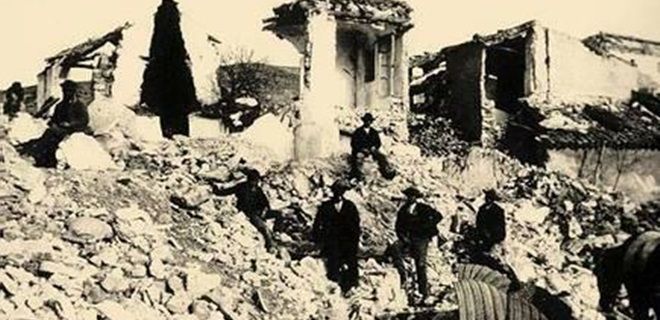The Ars Creatio Cultural Association, in collaboration with the town hall, are organising a series of events to mark the 1829 Torrevieja Earthquake which occurred on 21 March 1829, with tours given by costumed actors and seismologist, Nahúm Méndez Chazarra, from the University of Granada, giving a talk about the devastation and how it served to improve anti-seismic protocols.
Whereas we can only imagine the devastation that the 1829 earthquake caused, we have seen the death and destruction that the 7.8 earthquake that struck Turkey in February caused, killing at least 53,000 people, and destroying more than 200,000 buildings. The Torrevieja earthquake of 1829 had an estimated magnitude of 6.6 and killed 386 people, with 2,965 houses totally destroyed.
Although commonly referred to as the Torrevieja earthquake, the devastation affected the entire Vega Baja, but it wasn’t the first earthquake in the area. In fact, since the National Geographic Institute (IGN) started collecting records, three of the 27 major earthquakes that have occurred in Spain have occurred in the province of Alicante.
Prior to the 1829 disaster, we need to go back to 1048, when the Orihuela mosque was destroyed. The second was on 19 June 1644 and had its epicentre in Muro de Alcoy, where several houses were destroyed. Both are listed as “intensity VIII”, which was the old measure (before the 20th century) to assess the importance of earthquakes, although what it really reflected was the amount of destruction caused.
The registered intensity IX or X was the highest. In fact, the IGN has only documented two other earthquakes with this level in Spain: on 1 November 1755 in Cabo San Vicente, which produced a tsunami almost 15 metres high, and on 25 December 1885 in Arenas del Rey (Granada), with 4,400 buildings destroyed and more than 13,000 damaged.
The third earthquake is the one that is best documented. It happened on 21 March 1829 in the Torrevieja area, and affected three other municipalities, Almoradí, Benejúzar and Guardamar, that had to be completely rebuilt. That tragedy left 389 dead and 377 injured.
According to the chronicles, the decade between 1820 and 1830 was one of those with the greatest seismic activity in the province of Alicante. The intensity increased until, between 13 September 1828 and 21 March 1829, some 200 tremors occurred.
The last one was recorded around 6:15 p.m., with an estimated magnitude of 6.6 on the Richter scale, with the epicentre in the towns of Benejúzar, Rojales and Torrevieja. The catastrophe left hundreds dead and injured, in addition to 2,965 homes completely destroyed and 2,396 damaged. The bridges that crossed the Segura River in Almoradí, Benejúzar, Dolores and Guardamar also collapsed.
In addition to the municipalities located at its epicentre (which had to be almost completely rebuilt), the earthquake also affected the towns of Almoradí, Algorfa, Rafal, Torrelamata, Daya Vieja, Guardamar, Dolores, Redován, San Fulgencio and San Miguel de Salinas.
In fact, half of the deceased were from Almoradí, due to the narrowness of its streets. In this municipality, every year its inhabitants take San Emigdio, who is the patron saint of earthquakes, out into the streets and pray in memory of all the victims, a routine also celebrated in other towns, including Torrevieja.
Could something like this happen again? Well, in principle, according to the experts, yes, because two areas of the province of Alicante, l’Alacantí and the southern regions, are susceptible to having earthquakes of intensity 6 on the Richter scale.
The observation was made by the professor of the Department of Seismic Engineering and Geodesy of the Polytechnic University of Valencia (UPV), Paco García, who stressed that, of the three geological domains of the Valencian Community, “the most prone and most active” is the so-called Bético, in the south of Valencia and Alicante.
“We expect earthquakes of large magnitudes, from 6 up on the Richter scale. If the previous ones have been of great destructive quantity, why couldn’t they be repeated if they are the same faults,” he said. “Active quaternary faults are the ones that are of concern.”
García also pointed out that earthquake prediction is “in its infancy” because “we do not know where they will occur, in the areas where there is more probability, yes, but not when”. He also pointed out that new buildings are constructed with earthquakes in mind, and so the destruction should not be as intense, although we have seen from Turkey, for example, it could still be catastrophic.
What he completely ruled out is that the Valencian coast could suffer a tsunami, because “the magnitude of that earthquake will not reach a 6 or 7 and we have a highly developed continental shelf and the depth is very small, 200 or 300 metres”, unlike what occurs in the Gulf of Cádiz or the coast of Malaga, Ceuta, Melilla and the Moroccan and Algerian coast.






